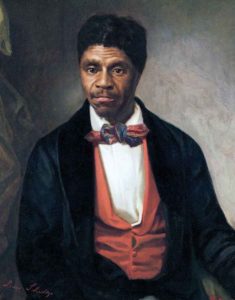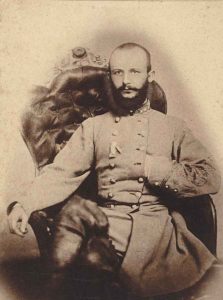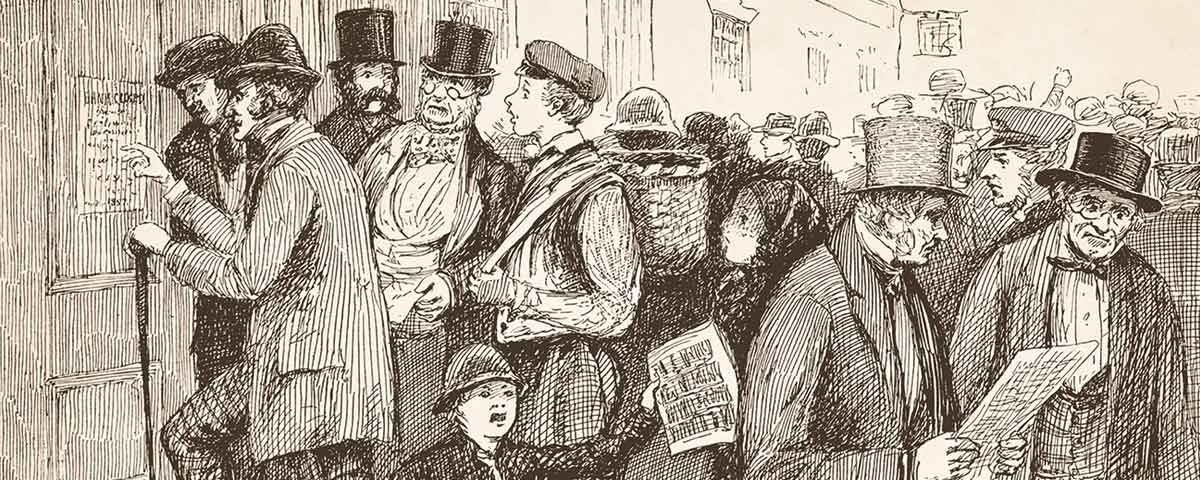No person in the United States from the 1830s through the 1850s thought in terms of an “antebellum” era. Latin for “before the war,” the word came into use only after the Civil War ended and participants, historians, and others sought to label the decades preceding the outbreak of fighting at Fort Sumter. Commonplace in the historical literature for many generations, it summons thoughts of a young republic lurching toward political collapse. Deployment of antebellum can create an impression of inevitability, of citizens increasingly obsessed with sectional differences, and of time ticking inexorably toward bloodshed on a massive scale. Indeed, the word can drain all meaning, except as prelude to four years of war, from a 30-year swath of national events and trends.
We should be wary of such retrospective historical framing. As always with the past, America’s prewar decades present an immensely complicated story rather than one pointing clearly toward secession and military conflict. An observer seeking interpretive themes between 1830 and 1860 could craft a narrative largely devoid of sectional issues. One theme involved a revolution in communications and transportation that dramatically shrank time and space. The electrical telegraph, first demonstrated by Samuel F. B. Morse in 1844, opened breathtaking possibilities. By 1861, Western Union’s lines connected the Eastern seaboard and California.

Railroads expanded exponentially from just fewer than 3,000 miles of track in 1840 to more than 30,000 in 1860. The telegraph and trains allowed information, goods, and passengers to move much faster, increasing the pace of life and commerce in ways that left observers somewhat flabbergasted.
A second theme centered on demographics. Population growth maintained a dizzying pace, averaging more than 33 percent a decade between 1830, when Americans numbered just more than 12,800,000, and 1860, when the total approached 31,500,000. Of the latter figure, more than 4,000,000 were foreign-born and approximately 10 percent Catholic—major increases as percentages of the whole population and due largely to German and Irish immigration.
The observer similarly could focus on headlines dealing with significant events unconnected to sectional disputes. Toward the end of the prewar period, for example, the Panic of 1857 and the Colorado gold rush of 1858-59 garnered massive attention throughout the nation. Part of a wider world economic crisis, the panic hit the North much harder than the South and caused considerable dislocation in the railroad industry, agricultural markets, and the banking sector for more than a year. For many caught in its pernicious grasp, the panic far exceeded in importance the Supreme Court’s Dred Scott decision of the same year.
The discovery of precious metals in Colorado, which inspired the cry “Pike’s Peak or Bust,” lured more than 100,000 immigrants to the Rocky Mountain region (a roughly comparable number had flooded into California during the initial year of gold fever in 1848-49). In 1859, news from Colorado easily could overshadow John Brown’s abortive raid at Harpers Ferry in October. To put it another way, most prewar Americans did not wake up every morning focusing on how the North and South differed. They looked first to their jobs, to their businesses, and to their families without knowing that a gigantic war lurked in the years ahead.
New York lawyer George Templeton Strong’s diary reveals that sectional issues did not always prevail. In 1857, Strong’s voluminous entries contain no mention of the Dred Scott decision but accord detailed coverage to the economic collapse. “We seem floundering,” he recorded on October 10. “Affairs are worse than ever today, and a period of general insolvency seems close upon us.” Four days later, with “Wall Street blue with collapse,” Strong exhibited great uncertainty: “Whether we’ve really reached the nadir, no one can tell.” Toward the end of the month he lamented that the “Depression continues….the tide is still running out and everything is drifting down with it, or else stuck fast already on the black mud flats of insolvency and destined to rot there and perish long before the tide comes back again.”

None of this is to say that sectional discord did not roil the national waters. Major disruptive moments that punctuated the timeline of North/South wrangling are well known: the Missouri controversy of 1820, the Mexican War in 1846-48, the Compromise of 1850, the Kansas-Nebraska Act of 1854, the caning of Charles Sumner on the floor of the Senate in 1856, the Dred Scott decision in 1857, and John Brown’s Raid. Less overtly political factors such as the establishment of William Lloyd Garrison’s The Liberator in 1831, Nat Turner’s rebellion the same year, publication of Harriett Beecher Stowe’s Uncle Tom’s Cabin and Hinton Rowan Helper’s The Impending Crisis of the South in 1852 and 1857, respectively, and splits in major Protestant denominations such as the Baptists and Methodists, create a portrait of Union disintegration.
Some people certainly predicted calamity long before the election of Abraham Lincoln. West Point cadet Stephen Dodson Ramseur of North Carolina, the son of a slaveholder, stood among these individuals. In the wake of James Buchanan’s triumph in 1856, Ramseur, though a staunch Democrat, adopted a gloomy stance. Typical of many young people, who more often than older Americans tended to be less forgiving of those across the sectional divide, he believed “any man of the smallest observation can plainly see, that the Union of the States cannot exist harmoniously; that there must, & can & will be a dissolution, wise, peaceful & equitable, I hope, but at whatever cost, it must come.” “Look out for a Stormy time in 1860,” he added: “In the mean time the South ought to prepare for the worst. Let her establish armories, collect stores & provide for the most desperate of all calamities—civil war.”
Witnesses such as Strong and Ramseur remind us to rely on contemporary sources, in their sometimes baffling complexity, to gauge the degree to which we should understand the antebellum era as one dominated by sectionalism. Mortally wounded at Cedar Creek on October 19, 1864, Ramseur never thought in terms of an antebellum world and, unlike Strong, did not live to experience the postbellum epoch.





